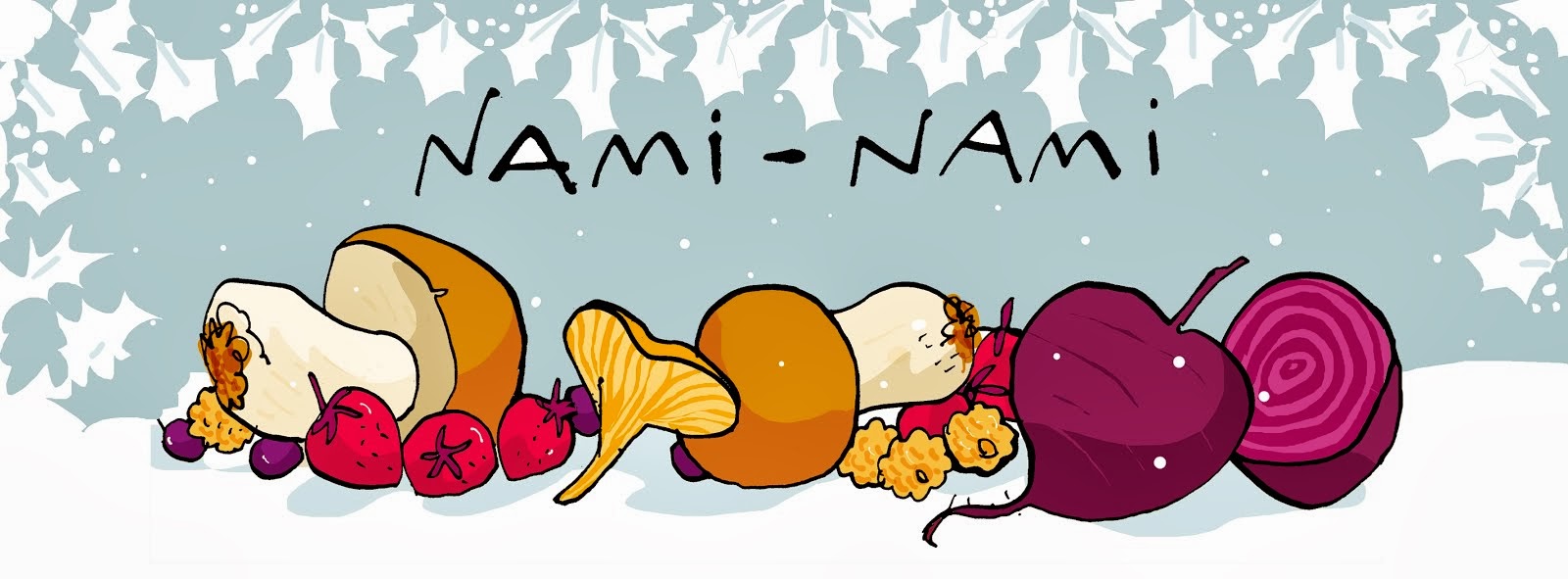
I love rhubarb. I've just checked my Flickr photostream and it seems that I've made no less than seven rhubarb cakes, six different rhubarb puddings, one type of jam and one drink during the last few weeks alone. But I was determined to try something savoury as well, so I combined this BBC Good Food recipe and this Delicious magazine recipe (they're remarkably similar, aren't they?), and made this Persian lamb stew.
Not sure this is my favourite new way of serving lamb, but it's definitely a nice and different recipe for using rhubarb. Frying of the herbs in butter is essential for the success of this recipe, as the flavour and aroma of fried parsley and mint is rather special, so no skipping of that part!
Persian Lamb and Rhubarb Stew
(Pärsia lambahautis rabarbriga)
Serves 4 to 5
75 g butter, divided
1 Tbsp sunflower or rapeseed oil
2 large onions, halved and sliced
750 g lamb, chopped into cubes (I used the leg)
2 tsp ground coriander seeds
1 litre vegetable stock
salt
freshly ground black pepper
sugar or honey, to taste
20 g fresh parsley, chopped
3 Tbsp fresh mint, chopped
400 g rhubarb, cut into 1 inch lengths
Melt 25 g of butter in a heavy-based saucepan on a low-moderate heat. Add onions and saute for 10 minutes, until golden and softened. Put the onion aside.
Increase the heat to high and add the oil. Add about half of the cubed lamb and brown all over (about 5 minutes). Put the browned meat aside and brown the rest of the lamb.
Return all the meat and the onions to the saucepan, add coriander. Add enough hot stock to cover. Reduce the heat, cover the saucepan and simmer on a low heat for about an hour.
Season with salt and pepper.
Melt 25 g of butter in a small saucepan, add the chopped fresh herbs and fry, stirring frequently, for 5 minutes. Add the fried herbs to the meat and simmer for another 30 minutes.
Melt the rest of the butter and add chopped rhubarb. Saute for 3-5 minutes, until rhubarb is soft, but not mushy. (If the rhubarb is very sour, add about a tablespoonful or two of sugar or honey). Stir the rhubarb into the stew.
Taste for seasoning and serve with rice or couscous.
Similar posts:
Persian lamb stew with rhubarb and mint by Ariana @ And Here We Are ...
Persian lamb with rhubarb and chelow @ Australian Gourmet Traveller
Persian rhubarb stew by Azita @ Turmeric and Saffron
Persian lamb and rhubarb stew by Dani @ The Kitchen Playground
Persian lamb and rhubarb stew by Laszlo @ Chef de Paprika








